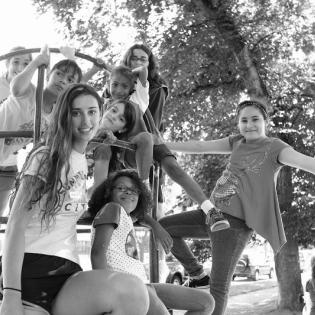Cultural Connections
Learners compare and contrast the work and mission of four famous philanthropists: Cesar Chavez, George Washington Carver, Sunderlal Buhuguna, and Abdul Sattar Edhi. They identify the motivations, impact, and attitudes about service, and start to clarify their personal attitudes about service by writing a personal mission statement.
The student will:
- observe how traditions in cultures influence attitudes about giving and serving.
- discuss personal reasons for giving and serving and write a mission statement.
- compare and contrast the background, motivations, and community impact of Edhi, Bahunguna, Carver, and Chavez.
- learner copies of handouts below:
- Four Biographies
- What Can I Give?
- Personal Mission Statement
Instructions
Anticipatory Set:
Share one or all of the following quotes for learners to discuss with a partner. Have them connect the quote to the idea of valuing diverse perspectives. After several minutes of discussing with a partner, discuss as a large group.
- "We really are fifteen different countries and it's really remarkable that each of us thinks we represent the real America. The midwesterner in Kansas, the black American in Durham—both are certain they are the real American." --Maya Angelou
- "I am what time, circumstance, history, have made of me, certainly, but I am also, much more than that. So are we all." --James Baldwin
- "The cause of freedom is not the cause of a race or a sect, a party or a class—it is the cause of human kind, the very birthright of humanity." --Anna Julia Cooper
- "America is woven of many strands. I would recognize them and let it so remain. Our fate is to become one, and yet many. This is not prophecy, but description." --Ralph Ellison
Give all learners copies of the handout Four Biographies. Ask four learners to read aloud the biographies of Cesar Chavez, George Washington Carver, Abdul Sattar Edhi, and Sunderlal Bahuguna while everyone listens and follows along.
Have them listen for the similarities and differences between the work, motivations, and passions of these four different people.
Working in small groups, each team creates a Venn or H diagram, comparing and contrasting two of the individuals they just read about. They may compare their work/goals, background/motivations, influences, impact, culture, and methods.
After learners complete their diagrams, discuss the following question: How does the person's traditional culture influence their advocacy and dedication to the cause?
Share the story of Sarah Cronk, an Iowa student who started a cheerleading squad for kids with special needs. Sarah was inspired when she saw the life of her brother with special needs enriched by his involvement in sports.
Remind the learners that people get involved in service for many reasons. Sarah Cronk got involved in her service project because she had a personal interest in young people with special needs. The people we read about in the biographies were influenced by their cultures. Ask the learners to think about their own motivations (based on their interests, experiences, culture) to make a difference.
The handout below What Can I Give? can help learners identify areas they care about.
Guide the learners to each write a personal mission statement in which they articulate what is important to them, especially related to service. They can use the handout below Personal Mission Statement as a guide.
Philanthropy Framework
-
Strand PHIL.I Definitions of Philanthropy
-
Standard DP 01. Define Philanthropy
-
Benchmark HS.1 Define philanthropy to include giving and sharing; volunteering; and private individual action intended for the common good. Explain how a volunteer individual/group can act for the common good.
-
-
Standard DP 06. Role of Family in Philanthropy
-
Benchmark HS.3 Identify how subgroups and families in society demonstrate giving, volunteering, and civic involvement.
-
-
-
Strand PHIL.II Philanthropy and Civil Society
-
Standard PCS 01. Self, citizenship, and society
-
Benchmark HS.2 Discuss and give examples of why some humans will sacrifice for the benefit of unknown others.
-
-
Standard PCS 02. Diverse Cultures
-
Benchmark HS.1 Analyze philanthropic traditions of diverse cultural groups and their contributions to civil society.
-
-
Standard PCS 05. Philanthropy and Government
-
Benchmark HS.12 Explain why private action is important to the protection of minority voices.
-
Benchmark HS.4 Identify and discuss civil society sector organizations working to protect individual rights, equity, and justice.
-
-
-
Strand PHIL.III Philanthropy and the Individual
-
Standard PI 01. Reasons for Individual Philanthropy
-
Benchmark HS.1 Define and give examples of motivations for giving and serving.
-
Benchmark HS.3 Describe and compare stewardship in a variety of cultural traditions.
-
-
